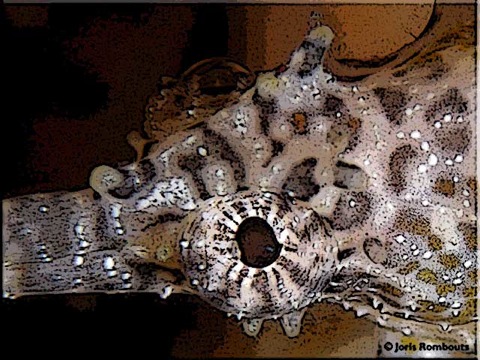- Check the sub-map for the specimen information files -
SEAHORSE AND PIPEFISH

There are around 55 genera worldwide making more than 320 species of seahorse and pipefish. Each has a favorite habitat for food and protection.
The seahorse (Hippocampus) is probably the most unusual of all fishes. They swim in an upright position and have a long, strong tail which they use to hold themselves to plants or corals. The seahorse has a tube-like snout with a small mouth at the end. As they don’t have teeth, seahorses and pipefish suck-in their food. The length of the snout is variable and depends on their living environment and diet. They have a dorsal fin, two pectoral fins and some species also have an anal fin. All of the fins are soft-rayed. However the free-swimming species have the most developed fins. Most seahorse species live on or just above the substrate. Some of the pigmy seahorse species live in gorgonians, at depths below -20 m.
Pipefish (Sygnathidae) have a long stick-like body with a tube-like snout similar to the seahorse. Some species also use their tail to hold on things, whilst others have a small or big fan-shaped tail fin for swimming. There are about six different species of Solenostomidae or ghostpipefish in the whole Indo-Pacific and some are still relatively unknown. All species show a great degree of variability in color, dermal appendages, gender, as well as changes from their postlarval to fully grown adults stage. Most species are widespread, which is probably because their pelagic stage sees them grow to almost the full length of an adult. The various species seem to have different preferences with regards to benthic habitats, ranging from muddy open substrates to rich invertebrate reefs. Seahorses and pipefish have an unusual reproduction strategy, except for the solenostomidae family. The female deposits the eggs in the males pouch (seahorse) or against a special patch (pipefish), so that the male becomes impregnated and incubates the eggs. The hatchlings are highly developed and look completely like the parents. Ghostpipefish (Solenostomidae): There are about six different species of Solenostomidae in the whole Indo-Pacific, of which some are still un-described. All species show a great degree of variability in color and dermal appendages, as well as changes from postlarval to fully grown adults or between sexes. Most species are widespread. The reason for this is probably because their pelagic stage reaches almost the full length of adults. The various species seem to have different preferences with regards to benthic habitats, ranging from muddy open substrates to rich invertebrate reefs. They probably are short-lived and maybe only live a year. They mostly appear seasonally and mainly to breed. Different from sea horses and other pipefish, ghostpipefish have brooding females instead of males and these use their large pelvic fins to form a pouch to hold the eggs in. The young will hatch after around ten days and directly have to take care of themselves. They are usually seen near objects, floating motionless with the head down. They are able to change color so they blend into their surroundings. Some even look like vegetation.
- Check the sub-map for the specimen information files -



